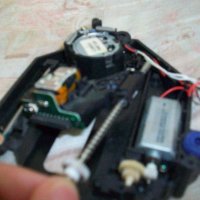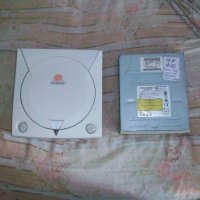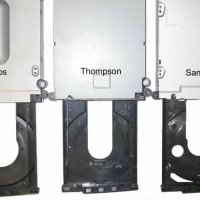High density drives on the Atari ST
This document outlines the steps necessary to connect a PC High Density drive to the ST. It will allow somebody with a basic understanding and experience of electronics and the ST to go ahead and do the mods but it is not a step by step set of instructions.
The upgrade is not difficult but you will need some knowledge of electronics and the inside of your ST. Think about it carefully because you're on your own if it goes wrong.
CONNECTING THE DRIVE
Connecting a standard 1.44 MB drive to your ST is not a problem.
You will simply need to buy an HD drive and put it in the place of your internal drive. The problem? Well it will only be able to read/write 720K disks.
MODIFYING YOUR ST
The floppy disk drive controller chip for the ST is the WD1772 chip.
This chip has a clock input on pin-8 of 8 MHz to provide the correct stepping pulse for DD floppies. This will also work with DD floppies in HD drives. However, high density disks require double the stepping pulse and therefore the clock input needs to be changed to 16 MHz in order to read and write them. When an HD drive is using a DD disk though, it still needs 8 MHz clock for the controller chip.
What needs to be done it to provide a means of detecting whether the disk HD. If it is then the standard clock input must be doubled to 16 MHz.
High density drives detect whether the disk is HD by looking for the extra hole. If the disk is high density then the HD detect line connected to the drive is set low (high for DD). This HD detect line is pin-2 on the 34 way drive connector cable.
This means that if we have a 16 MHz clock generator we can use the HD detect line to select either our new 16 MHz clock and apply it to pin-8 of the floppy disk controller or use the existing 8 MHz clock. To do this we need a couple of CMOS (must be CMOS to operate at 16MHz) logic chips and a multivibrator. Pin 8 of the disk controller must be carefully de-soldered and lifted off the track. A jump wire is then attached to the track to get our 8 MHz input. The lifted pin should then be hooked up to the output of our circuit. A suggested logic schematic is represented below.
16 MHz -----|--------|
| NAND |-----------------|
HD detect -----|--------| |
| |---|-------|
|---|--------| | XOR |--- Pin 8
| | NAND |--| |---|-------| (WD1172)
|---|--------| |--|--------| |
| NAND |--|
8 MHz ----------------------|--------| NOTES AND WARNINGS
The WD1172 chip is only designed for 8 MHz operation and so, inevitably, some will fail at 16 MHz. There is no way of telling if yours will work beforehand. If the chip does fail you will have to order an STE Ajax chip from Atari (tel. 0753 533344). This new chip does work at 16 MHz and will replace your old failed chip.
If you have two floppy drives then, unless you make other alterations, they must both be HD as DD disks will not work reliably with 16 MHz clock.
Lifting the pin on the disk controller chip is a delicate job and there is a high risk of damage to the pin, chip or track. You should definitely use a heat sink clipped onto the pin to prevent heat damage to the chip. Perhaps it would be easier to de-solder the whole chip and insert a doctored socket to plug it back into.























